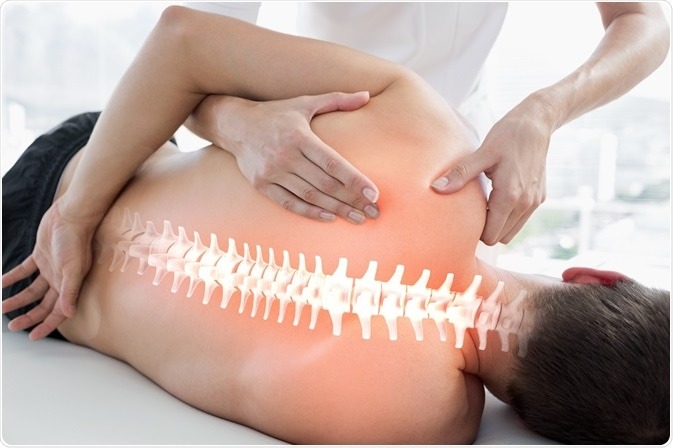Manual therapy is becoming increasingly important in the recovery process following spinal surgery. Dr. Larry Davidson, a specialist in spine health, believes that hands-on techniques can significantly reduce pain, improve mobility and enhance the overall quality of postoperative care. When carefully applied by skilled therapists, manual therapy offers both immediate and long-term benefits by addressing soft tissue restrictions and joint stiffness that contribute to lingering discomfort.
This therapy complements traditional rehabilitation and is particularly useful when integrated with movement training and pain management strategies. It enhances tissue flexibility, supports neuromuscular re-education and prepares the body for more advanced exercises. Addressing both the physical and sensory aspects of healing helps patients build confidence in their movements and reduces the risk of compensatory patterns that can lead to further discomfort.
Understanding Manual Therapy in Postoperative Context
Manual therapy encompasses a range of hands-on techniques aimed at relieving muscle tension, improving joint movement and enhancing circulation. In the context of spinal surgery recovery, manual therapy is used not to manipulate the spine directly but to treat the surrounding tissues that may have been affected during or after surgery.
These techniques include soft tissue mobilization, myofascial release, trigger point therapy, scar tissue massage and passive stretching. Each is applied with the goal of reducing discomfort, restoring function and supporting natural healing processes without introducing additional stress to the surgical site.
Manual therapy is often introduced once the initial phase of healing is underway, usually within the first few weeks after surgery, depending on the procedure and the patient’s overall condition.
Reducing Pain Through Soft Tissue Techniques
Following spinal surgery, it’s common for patients to experience tightness in the muscles surrounding the spine, particularly in the paraspinal muscles, hips and shoulders. This tightness often contributes to postural imbalances and motion restriction, both of which can increase pain levels.
Manual therapy helps release this muscular tension, making it easier for patients to perform physical therapy exercises and resume daily activities. Techniques such as kneading, deep tissue work and muscle stripping are applied to promote blood flow, reduce lactic acid buildup and relax hypertonic muscles.
In areas where inflammation persists, gentle mobilization techniques are used to calm irritated tissues without applying excessive pressure. These movements help reduce the local pain response and improve comfort during functional movements.
Improving Circulation and Tissue Healing
Good blood flow is essential for tissue repair. After surgery, inflammation and inactivity can reduce circulation in certain areas, especially where muscles are guarding or posture is compromised. Manual therapy stimulates the lymphatic and circulatory systems, helping to clear waste products and deliver nutrients and oxygen to healing tissues.
Increased circulation also helps prevent the formation of adhesions tight, fibrous bands that can develop after surgery and limit movement. By encouraging tissue pliability, manual therapy supports better mobility outcomes and reduces long-term discomfort.
Patients often report feeling immediate relief after sessions, with less stiffness and more ease of motion.
Dr. Larry Davidson points out, “Emerging minimally spinal surgical techniques have certainly changed the way that we are able to perform various types of spinal fusions. All of these innovations are aimed at allowing for an improved patient outcome and overall experience.” These surgical advancements, when combined with therapies that enhance circulation and mobility, contribute to a more complete and efficient healing process.
Addressing Scar Tissue and Fascial Restrictions
Scar tissue can be a source of pain and restricted movement following spinal surgery, particularly near incision sites or in deeper muscular layers. As the body heals, collagen fibers may form irregularly, creating tight bands that interfere with normal tissue glide and elasticity.
Manual therapy techniques such as cross-friction massage and Instrument-Assisted Soft Tissue Mobilization (IASTM) help break down these adhesions and improve the organization of scar tissue. Releasing these restrictions enhances mobility and reduces discomfort during stretching, walking and other activities.
Myofascial release is another effective technique for reducing stiffness in the fascia, a connective tissue that surrounds muscles and other structures. Releasing tension in the fascia can improve posture and relieve nerve pressure that may contribute to radiating pain or numbness.
Complementing Other Rehabilitation Approaches
Manual therapy is not used in isolation. It works best when paired with active rehabilitation strategies such as targeted exercise, postural retraining and neuromuscular re-education. A typical session may begin with manual techniques to relieve tension and improve range of motion, followed by specific exercises to reinforce new movement patterns and build strength.
This combination accelerates progress by removing the physical barriers to movement and retraining the body to use muscles efficiently and without compensation.
For patients with persistent discomfort, manual therapy may also be coordinated with modalities like electrical stimulation, heat therapy or kinesiology taping for additional support.
Building Patient Trust and Confidence
One often overlooked benefit of manual therapy is the human connection it creates between patients and their providers. The hands-on nature of treatment fosters a sense of care, comfort and reassurance, qualities that can reduce anxiety and improve engagement in the recovery process.
Patients who feel heard and supported are more likely to adhere to their rehab plan, report symptoms promptly and remain motivated as they navigate the challenges of recovery. Manual therapy also helps patients become more attuned to their bodies, recognizing patterns of tension or movement that may need correction.
Safety Considerations and Proper Timing
While manual therapy offers many benefits, it must be applied carefully, particularly in the early stages of spinal recovery. Therapists avoid direct pressure on the surgical site and use conservative techniques until sufficient healing has occurred. Communication with the surgical team is essential to ensure that therapy aligns with the patient’s post-op timeline and does not interfere with fusion or implant stability.
Patients who undergo spinal fusion or instrumentation may require a longer delay before deeper techniques are introduced, while those recovering from less invasive procedures may begin manual therapy sooner.
All interventions are adapted to the patient’s pain tolerance, functional level and recovery goals, ensuring that treatment remains both safe and effective.
Future Integration and Advancements
As research into postoperative care continues to expand, manual therapy is becoming more widely recognized as a key component of recovery. Emerging technologies such as motion capture systems and digital posture analysis may soon enhance how manual therapy is planned and delivered, allowing for even more personalized treatment.
Integration with other regenerative approaches, such as platelet-rich plasma (PRP) injections or dry needling, may expand the scope and effectiveness of manual care, particularly for patients with complex recovery challenges.

